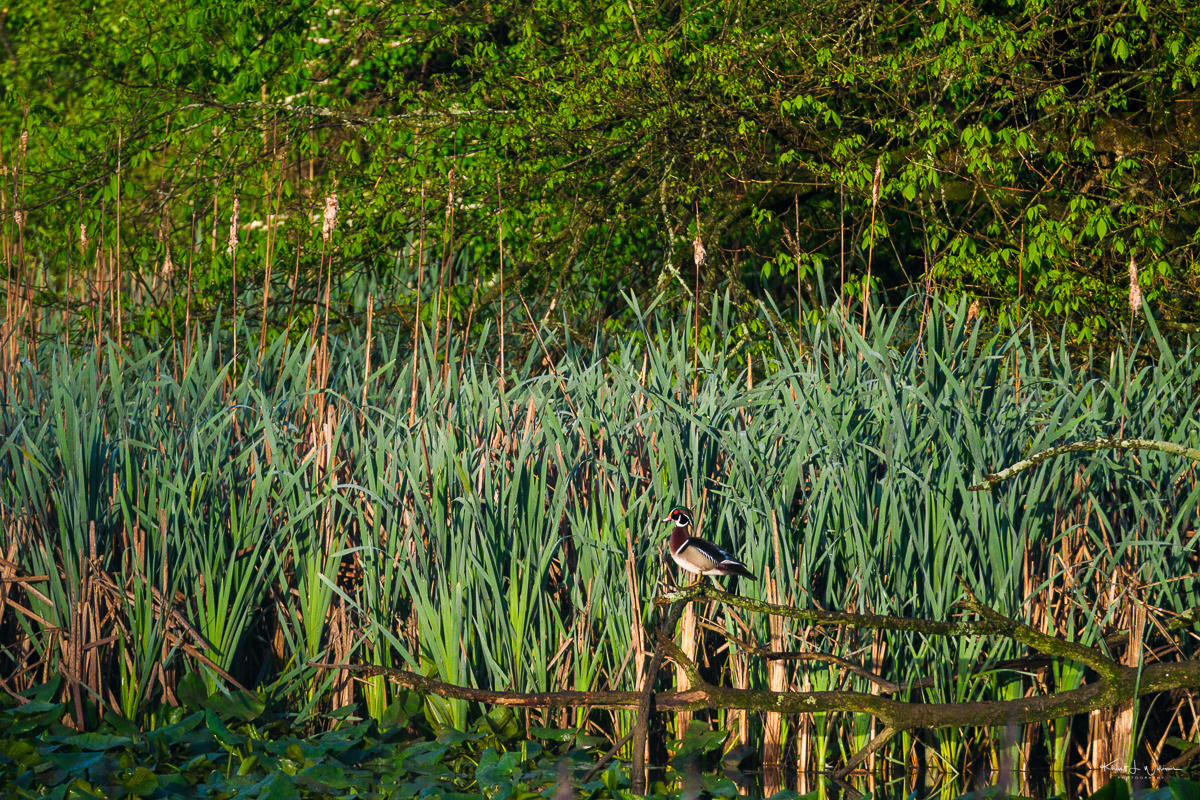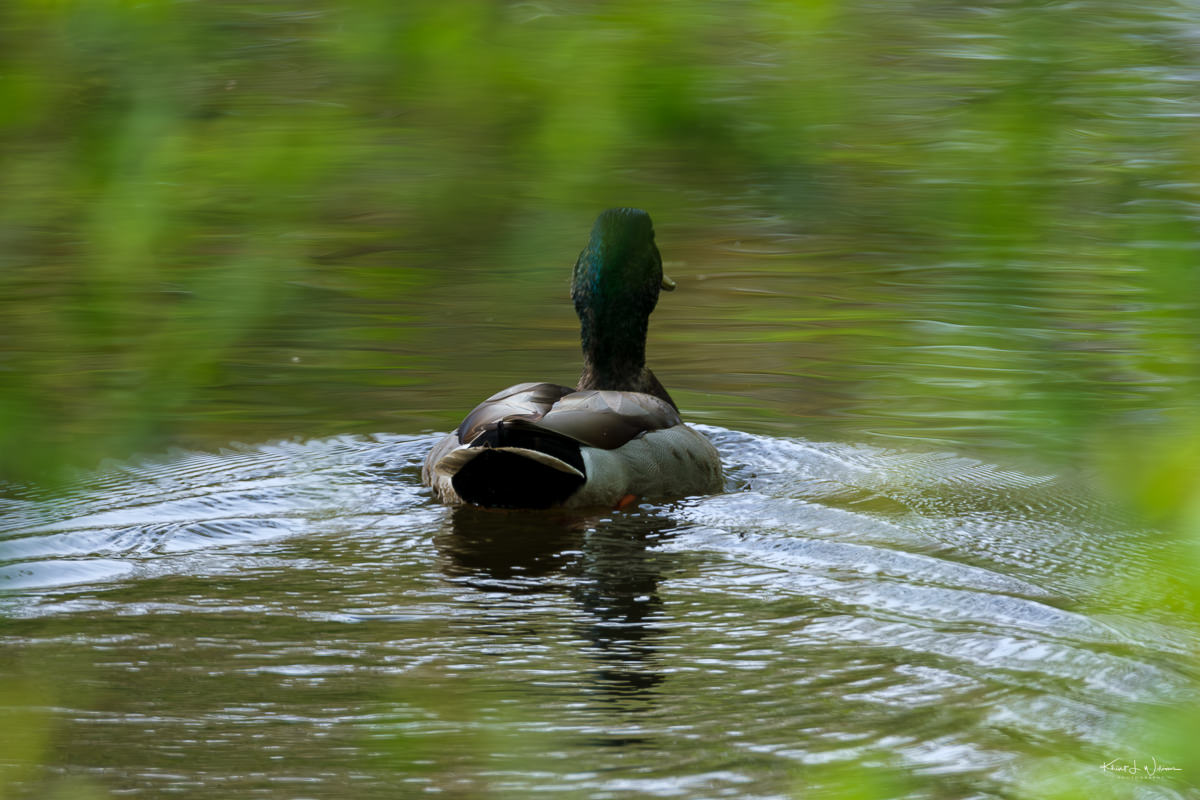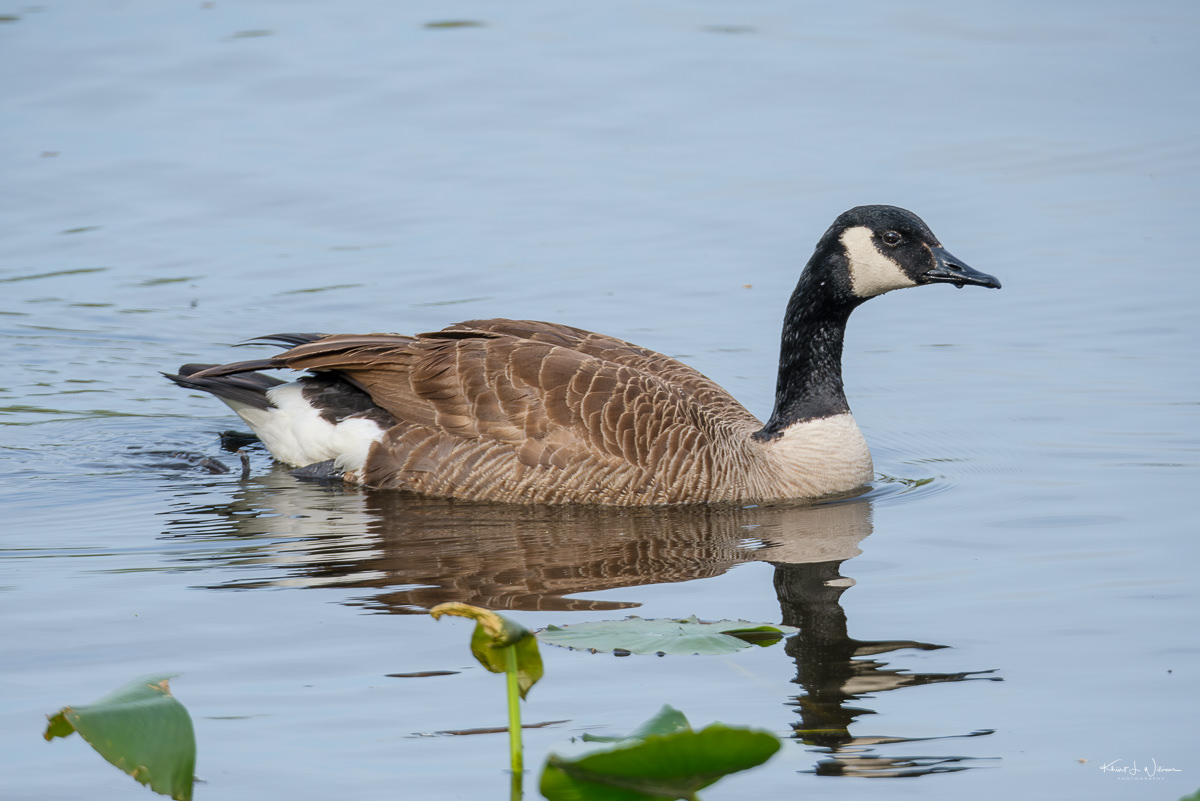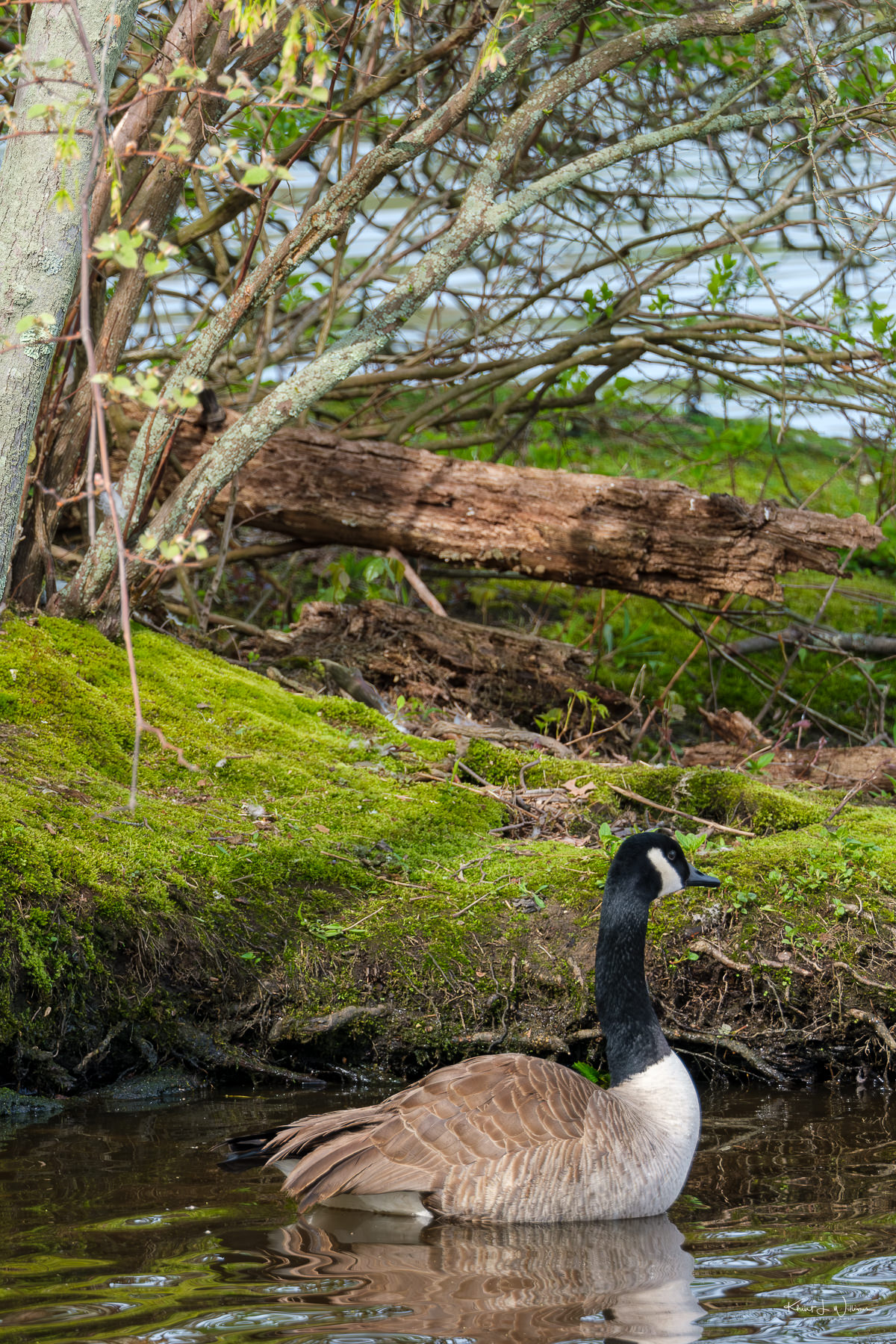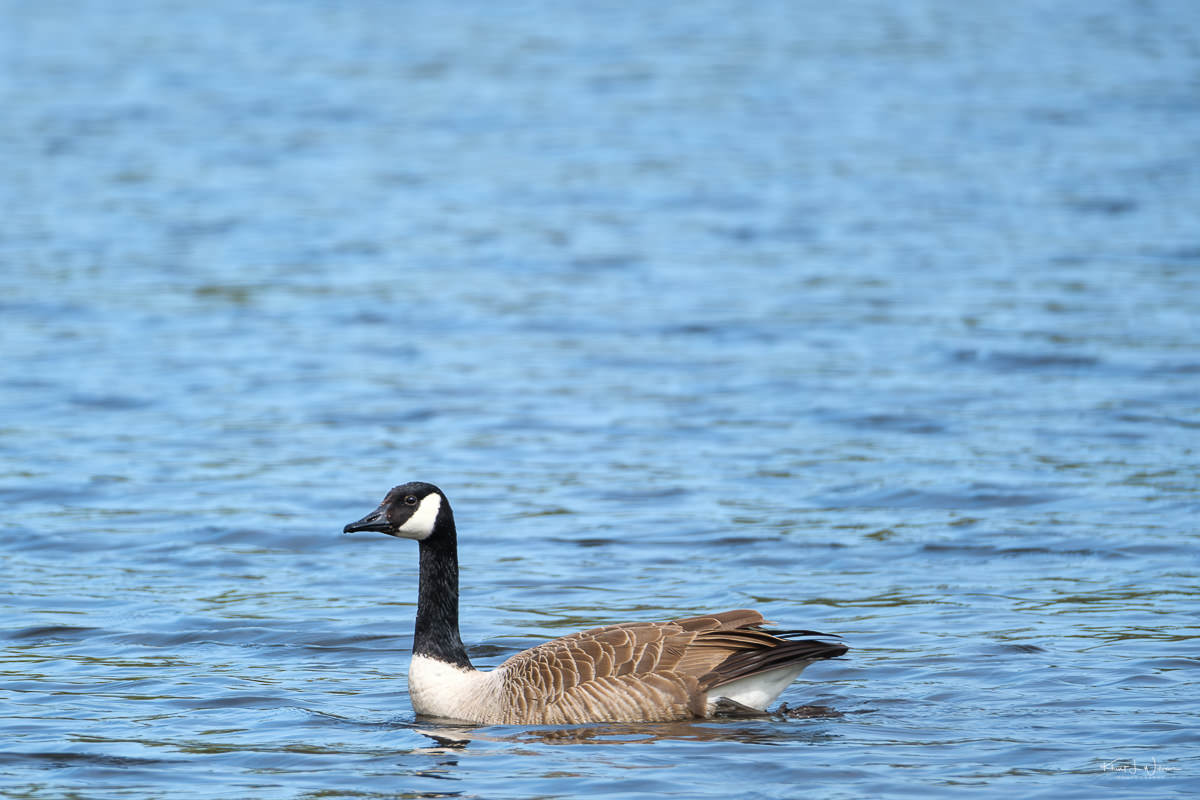After I read Michael Stephen Wills’s post on wild ducks, I remembered photographing some in the Charles H. Rogers Wildlife Refuge early in May.
It was very early in the morning. With bleary eyes and brimming anticipation, I stood on the observation platform, clutching my XF150-600mmF5.6-8 R LM OIS WR. I heard some noisy splashing in the far corner of the swamp. I didn’t know what was happening. Peering through the viewfinder, I zoomed to 600m, and voilà, there they were—ducks. But what kind? "Is this a mallard or a duck? Is there even a difference?" My knowledge of ducks was about as extensive as a duck's knowledge of cameras.
Fortunately, Merlin ID has a Photo ID feature and an excellent database of birds. Photo ID offered a short list of possible matches. With a few quick taps, I identified the bird as the Wood Duck (Aix sponsa), not to be confused with its cartoonish cousin, Daffy. Unlike Daffy Duck, Wood Ducks have a crested heads, a thin neck, and a long, broad tail. Their silhouette shows a skinny neck, long body, thick tail, and short wings.
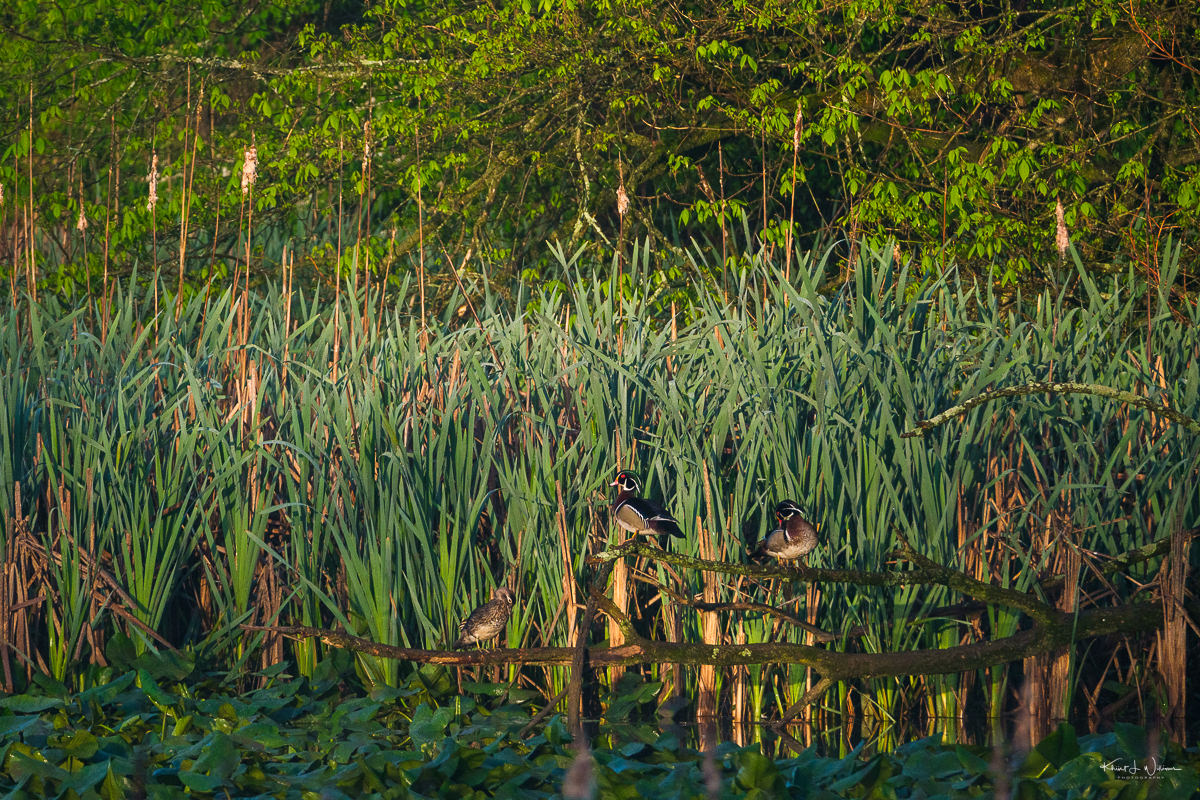
Unlike Daffy Duck, known for his dramatic flair, Wood Ducks possess crested heads, slender necks, and long, broad tails. Their silhouette might remind you of an elegant dinner guest—skinny neck, long body, and short wings—except for the thick tail.
You may not be able to see it from the photographs, but males have glossy green heads adorned with white stripes, chestnut breasts, and buffy sides. They'll look dark overall in low or harsh light with paler sides. On the other hand, the females sport a grey-brown dress with a white-speckled breast. Regrettably, no females for my camera that day.
With a fondness for wet locales with trees or extensive cattails, Wood Ducks thrive in wooded swamps like the Charles H. Rogers Wildlife Refuge. They stick to wet areas with trees or extensive cattails. It's a lifestyle choice, really, one that sets them apart from their Looney Toon counterpart.
